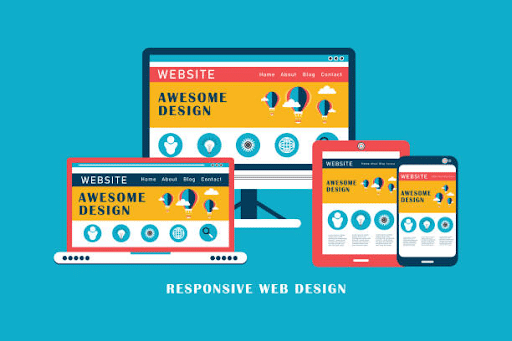In today’s digital age, having a website is crucial for any business, including restaurants. A website serves as a digital storefront, providing customers with information about the restaurant, its menu, and other details. However, with the rise of mobile devices, it’s essential to have a website that is responsive and mobile-friendly. In this guide, we’ll explore the impact of responsive design on restaurant websites and provide a complete guide to creating a responsive website.
Table of Contents
ToggleWhat is Responsive Design?
Responsive design is an approach to web design service that ensures that a website is optimized for all devices, including desktops, laptops, tablets, and smartphones. A responsive website automatically adjusts its layout and content to fit the screen size of the device being used to view it. This means that users get an optimal viewing experience, regardless of the device they’re using.
The Impact of Responsive Design on Restaurant Websites
Responsive design has a significant impact on restaurant websites. Here are some of the benefits of having a responsive website:
1. Increased Visibility and Accessibility
A responsive website ensures that your website is accessible to users on all devices, including smartphones and tablets. This means that you can reach a wider audience and increase your visibility.
2. Better Customer Engagement
A responsive website provides users with an optimal viewing experience, regardless of the device they’re using. This means that users can easily navigate the website, find the information they need, and place orders. This leads to better customer engagement and satisfaction.
3. Online Ordering and Reservations
A responsive website makes it easy for customers to place orders and make reservations online. This means that you can increase your revenue by offering online ordering and reservations.
4. Cost-Effective Marketing
Responsive design is a cost-effective solution for creating a mobile-friendly website. Instead of creating a separate mobile website, you can create a single responsive website that works on all devices. This means that you can save money on marketing and website development costs.
5. Competitive Advantage
A responsive website gives you a competitive advantage over other restaurants that don’t have a mobile-friendly website. This means that you can attract more customers and increase your revenue.
6. More Traffic Coming from Mobile
With the rise of mobile devices, it’s essential to have a website that is optimized for mobile. A responsive website, such as the one crafted by Eagle Wing Digital, ensures that your website is accessible to users on all devices, including smartphones and tablets. This means that you can attract more traffic from mobile devices.
7. Increased Carryout and Delivery Orders from Mobile Users
A responsive website makes it easy for customers to place orders online. This means that you can increase your revenue by offering online ordering and delivery services.
8. Faster Loading Speed
A responsive website loads faster than a non-responsive website. This means that users can access your website quickly and easily.
9. Higher Conversion Rates
A responsive website has higher conversion rates than a non-responsive website. This means that users are more likely to place orders and make reservations on your website.
10. Better SEO
Search engines like Google prefer responsive websites because they provide a better user experience. This means that responsive websites are more likely to rank higher in search engine results pages (SERPs) than non-responsive websites.
11. Simpler Analytics
A responsive website makes it easier to track user behavior and website analytics. This means that you can make data-driven decisions to improve your website and increase your revenue.
12. More Affordable
Responsive design is a cost-effective solution for creating a mobile-friendly website. Instead of creating a separate mobile website, you can create a single responsive website that works on all devices. Additionally, implementing site care plans ensures ongoing maintenance and updates, reducing long-term costs on website development.
How to Create a Responsive Restaurant Website?

Creating a responsive restaurant website is easy. Here’s a step-by-step guide:
Step 1: Choose a Responsive Design
The first step in creating a responsive restaurant website is to choose a responsive design. There are many responsive website templates available online that you can use to create your website.
Step 2: Optimize Your Images
Optimizing your images is essential for creating a responsive website. Large images can slow down your website and make it difficult to load on mobile devices. Make sure to compress your images and use the appropriate file format.
Step 3: Use Responsive Navigation
Responsive navigation is essential for creating a mobile-friendly website. Make sure to use a navigation menu that is easy to use on mobile devices.
Step 4: Test Your Website
Testing your website is essential to ensure that it’s responsive and mobile-friendly. Use online tools like Google’s Mobile-Friendly Test to check if your website is optimized for mobile devices.
Step 5: Use Responsive Typography
Responsive typography is essential for creating a mobile-friendly website. Make sure to use a font size and style that is easy to read on mobile devices. Quality content creation tailored for various screen sizes and devices further enhances the user experience and ensures readability across different platforms.
Step 6: Optimize Your Forms
Optimizing your forms is essential for creating a responsive website. Make sure to use forms that are easy to fill out on mobile devices.
Step 7: Use Responsive Images
Responsive images are essential for creating a mobile-friendly website. Make sure to use images that are optimized for mobile devices and that load quickly.
Step 8: Test Your Website on Multiple Devices
Testing your website on multiple devices is essential to ensure that it’s responsive and mobile-friendly. Use online tools like Google’s Mobile-Friendly Test to check if your website is optimized for mobile devices.
I hope these additional steps help you create a more comprehensive guide. Let me know if you have any other questions or need further assistance.
Conclusion
Responsive design is essential for creating a mobile-friendly restaurant website. A responsive website provides users with an optimal viewing experience, regardless of the device they’re using. By following the steps outlined in this guide, you can create a responsive restaurant website that is optimized for all devices. Look no further than Eagle Wing Digital! Our team of dedicated experts specializes in creating responsive restaurant websites that are optimized for all devices. By following the steps outlined in our guide, you can create a website that is both visually appealing and user-friendly.
I hope this guide from Eagle Wing Digital helps you create a responsive restaurant website that meets your needs. If you have any questions or need further assistance, please don’t hesitate to ask.







